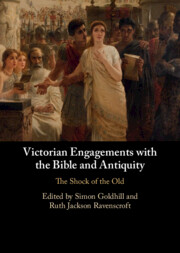
Psychologists have historically regarded reaction time as a fundamental metric in cognitive psychology research, originating from a period before the establishment of psychology as a formal field. This metric is frequently utilized to uncover variations in cognitive processing by analyzing participants’ response times to different stimuli under diverse conditions. Such variations may indicate unique cognitive functions in these contexts.
In the past, Francis Galton, who is recognized for his contributions to eugenics and statistics, compiled a dataset of ‘simple reaction times’ at the close of the 19th century, involving 3,410 subjects. Galton’s approach differed from contemporary psychologists as he aimed to use reaction time as a gauge of individual differences. He suggested that discrepancies in processing speeds might point to differences in intelligence, proposing a potential avenue for efficient intelligence evaluation via the documentation of reaction times.
Galton’s records provoke an intriguing inquiry—have humans become quicker or slower in reaction times since the Victorian period? Assuming Galton’s theory is correct, the answer might not only predict the results of a hypothetical quick-draw contest with a Victorian individual but also illuminate generational changes in cognitive capabilities.
Data on reaction times contrasts with the Flynn Effect, which denotes the observed increase in IQ scores across generations. This phenomenon challenges the notion that contemporary generations possess lower intelligence, even though there are perceptions of declining decorum and discipline, a viewpoint noted since antiquity.
While the Flynn Effect indicates rising intelligence levels, research into reaction times suggests the contrary—participants from the Victorian age seemingly demonstrated swifter response times. Scientific inquiries have largely mirrored Galton’s original approach to corroborate these outcomes. One study referenced Silverman (2010), which juxtaposed reaction times from research since 1941 against Galton’s findings, revealing that modern generations generally exhibit slower reaction times. These differences cannot be ascribed to measurement inaccuracies.
A study conducted by Woodley et al. (2015) visually represents this trend, showcasing a secular deceleration in reaction times across four prominent UK studies over the span of a century. This roughly 20-millisecond (around 10%) lag over a century constitutes a significant finding in reaction time research.
Analyzing these results prompts essential inquiries. Does this reflect a decline in cognitive capability, or could it be influenced by heightened cognitive demands, changes in motivation, or alterations in experimental methods and participant engagement? Despite these uncertainties, confidence in younger generations remains unwavering.
References:
– Irwin, W. S. (2010). Simple reaction time: it is not what it used to be. American Journal of Psychology, 123(1), 39-50.
– Woodley, M. A., Te Nijenhuis, J., & Murphy, R. (2013). Were the Victorians cleverer than us? The decline in general intelligence estimated from a meta-analysis of the slowing of simple reaction time. Intelligence, 41(6), 843-850.
– Woodley, M. A, Te Nijenhuis, J., & Murphy, R. (2015). The Victorians were still faster than us. Commentary: Factors influencing the latency of simple reaction time. Frontiers in Human Neuroscience, 9, 452.